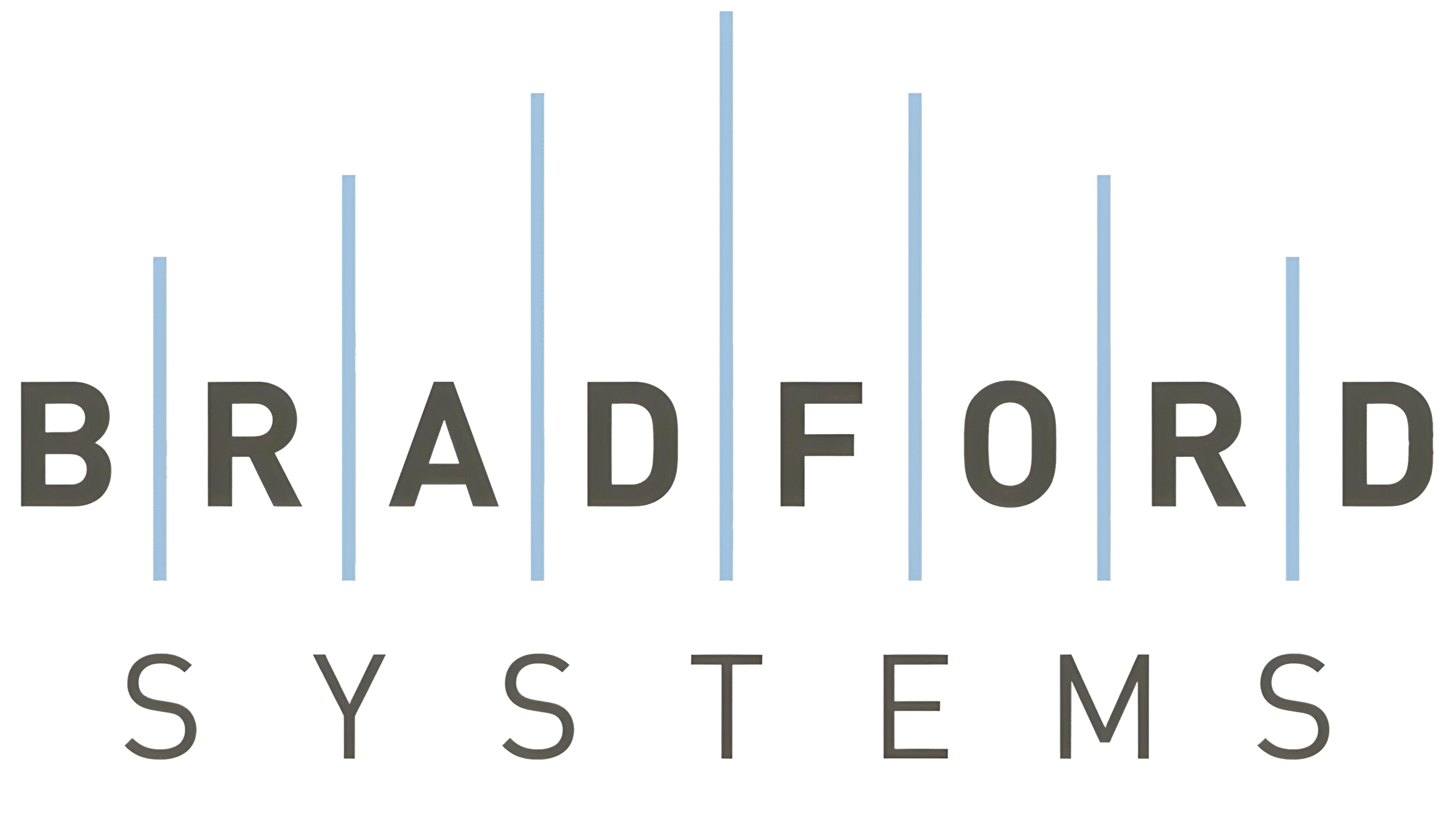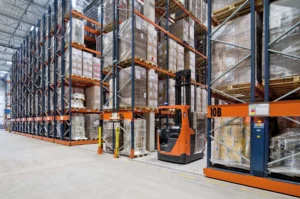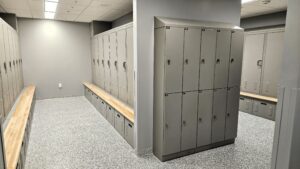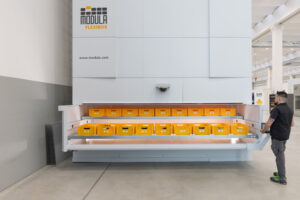The library of the past was defined by rows of fixed book stacks, hushed reading rooms, and clearly delineated functions. But today’s libraries, especially on college campuses, public systems, and K–12 institutions, are evolving into dynamic learning hubs. They host collaborative work, maker programs, technology access, pop-up events, and flexible study zones. To succeed in this environment, libraries must shed the static shell of traditional shelving and adopt solutions that are flexible and adaptable.
In short, libraries must be reimagined for flexible learning.
In this post, we’ll explore:
- Why flexibility and adaptability are essential in today’s library design.
- The benefits of upgrading or reconfiguring a library’s storage and shelving.
- How Spacesaver’s Flexible Shelving offers a powerful tool in this transformation.
- How Bradford Systems can help you implement these changes effectively.
The Need for Flexibility & Adaptability in Today’s Libraries
Changing User Behaviors & Program Models
Libraries today serve many purposes: they are study spaces, media centers, makerspaces, collaboration zones, event venues, and community gathering points. Their collections now include not just books, but media, technology, makers’ tools, archives, and more. That means the physical layout and storage requirements are constantly shifting.
A room that’s perfect for quiet stacks in the morning may need to be converted into a workshop space in the afternoon—or a lecture area, a pop-up exhibit, or a group meeting zone. Without adaptable infrastructure, libraries end up with wasted space or prohibitive constraints.
Flexibility and adaptability are paramount within these environments; spaces that can adapt readily and easily help libraries meet users’ changing needs.
Space Constraints & Multi-Purpose Use
Many libraries are constrained by footprint. Urban campuses or older facilities may not have the luxury of sprawling stacks of books. Yet demand for new services increases, so libraries must squeeze more utility out of each square foot. The ability to reconfigure shelving, roll units aside, or collapse or expand zones enables a library to support multiple uses in the same physical space.
Flexible shelving systems help turn “dead space” or underutilized aisles into usable areas for study pods, micro-events, exhibits, or makerspace stations. Flexible shelving frees valuable space for events, meetings, classes, training, and more.
Adapting to Collection Growth & Media Diversity
Collections evolve. New media formats emerge; digital archives grow; print usage may shrink or shift. A shelving system rigidly configured for heavy volumes of print books may not be efficient when large swaths of content are converted to digital or multimedia formats. Libraries must be able to reconfigure shelves, replace sections, or pivot toward more display and less storage.
Budget Realities & Long-Term ROI
Libraries often must deliver more with limited budgets. Investing in infrastructure that locks in rigid layouts can be risky when needs change. On the other hand, investing in adaptable systems ensures that dollars spent continue to pay dividends for years. Flexible shelving supports reconfiguration rather than wholesale replacement.
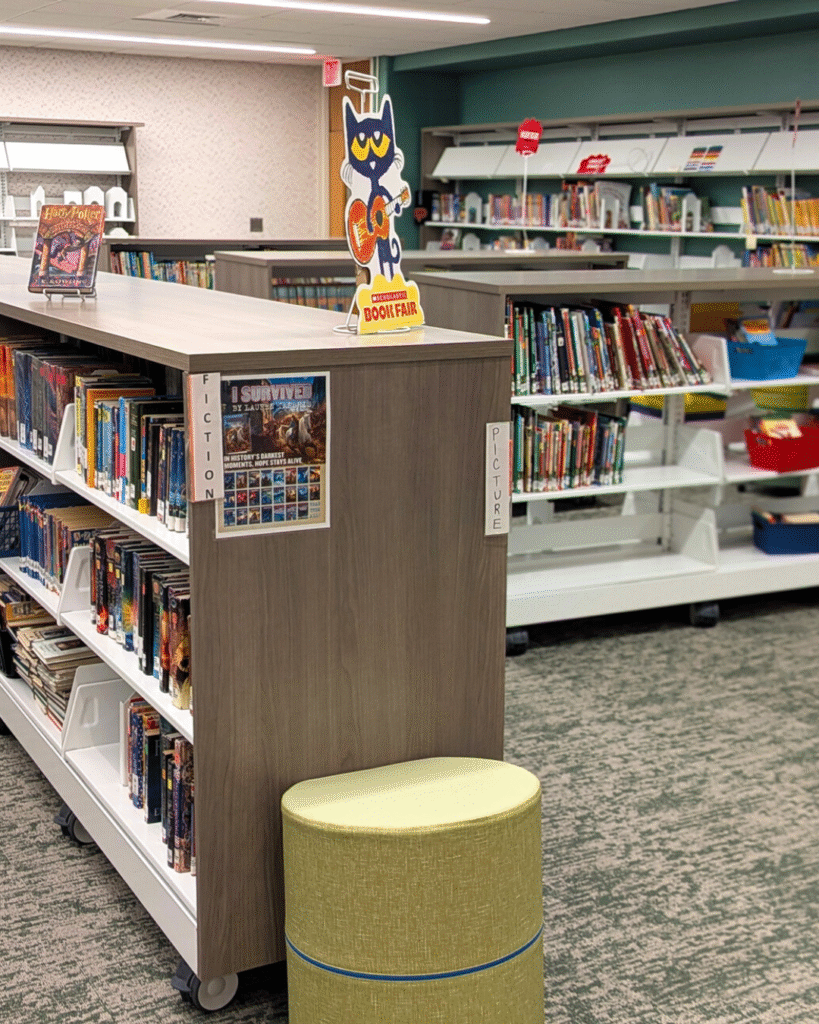
Why Upgrade Your Library? The Benefits of Flexible Design
If you’re considering giving your library a refresh or simply optimizing what you already have, here are the key advantages of moving toward flexible, modular systems:
1. Better Space Utilization & Efficiency
- Redeploy shelving to create multi-use zones.
- Reduce aisles or open them selectively.
- Turn corners and niches into display or study zones.
- Collapse or expand shelving zones as needed for program requirements.
2. Program Versatility
- Host lectures, workshops, pop-up exhibits, or group events without feeling boxed in by fixed stacks.
- Move shelving modules aside or reorient them as needed.
- Reposition shelving to support point-of-need access, near a makerspace, tech station, or study zone.
3. Future-Ready Infrastructure
- As your collection or services evolve, you won’t have to rip out existing infrastructure; you can reconfigure, expand, or contract it.
- Supports modular growth and phased upgrades.
- Minimizes disruption and expenditure over time.
4. Enhanced User Experience
- Better sightlines, more open space, more intuitive navigation.
- Easier access to materials, especially when shelving heights or configurations can be adjusted to user traffic.
- Inviting zones for collaboration, browsing, and display.
5. Cost Effectiveness Over the Long Term
- Rather than funding repeated remodeling, invest once in a system that evolves over time.
- Lower cost-per-square-foot when space is multi-purpose.
- Better return on investment by extending the useful life of shelving infrastructure.
6. Aesthetic & Brand Cohesion
- Flexible shelving systems often allow for customizable end panels in laminate, wood, acrylic, or resin, ensuring the shelving can match the library’s interior design.
- When rearrangement happens, the space remains visually cohesive rather than piecemeal.
Product Spotlight: Spacesaver’s Flexible Shelving
To make this transformation possible, libraries need the right tools—and one of the most powerful is Spacesaver’s Flexible Shelving line. Below is an overview of features, options, and how it supports flexible learning environments.
What Is Flexible Shelving?
Spacesaver’s Flexible Shelving is a hybrid between durable shelving and mobile carts, combining the mobility and ease of reconfiguration of library carts with the structural integrity and capacity of traditional shelving.
It’s designed to be reconfigured, relocated, expanded, or repositioned as needs change, even mid-term, mid-semester, or as collections evolve.
Key Features & Specifications
Some of the standout attributes of Spacesaver’s Flexible Shelving include:
- Mobility via Casters: Units are equipped with casters (either exposed locking or concealed) that allow for easy movement or secure locking in place.
- Interchangeable Shelving Configurations: Flexible Shelving can be built with either 4-post or Cantilever shelving on the frame, depending on depth, display, or media type requirements.
- High Load Capacity: The caster bases are robust and designed to handle heavy materials.
- Customizable End Panels: Finishes are available in laminate, wood, acrylic, and resin, allowing shelving to blend or accentuate design choices.
- Variety of Styles:
• 4-Post Flexible Shelving – Secure and strong, capable of handling heavy loads, with exposed locking casters.
• Cantilever Flexible Shelving – Ideal for display and easier access, can be mounted or reconfigured. - Concealed vs. Exposed Casters:
• Exposed locking casters allow frequent movement and secure positioning.
• Concealed casters maintain the visual impression of static shelving but retain mobility for occasional reconfiguration. - Multi-Use Capacity: Flexible Shelving supports a range of media, including books, multimedia, periodicals, archival collections, display items, and makerspace supplies.

How Flexible Shelving Supports Flexible Learning
- Point-of-Need Storage: Move shelving to wherever it’s needed most: classrooms, study pods, or event spaces.
- Dynamic Configuration: Reposition shelving as courses, semesters, or activities are added, changed, or removed.
- Pop-up Zones: Easily create temporary displays or exhibits.
- Alternate Stack Modes: Use dense storage in one zone and flexible shelving in others for quick access and display.
- Aesthetic & Spatial Flow: Maintain open sightlines and clear circulation with mobile units.
- Long-Term Scalability: Add or reconfigure modules instead of replacing entire systems.
Libraries that have adopted flexible shelving report greater usability, improved patron satisfaction, and better adaptability to changing programming.
Blueprint for Reimagining Your Library
1. Assess Needs & Goals
- Interview stakeholders to understand evolving needs.
- Identify static vs. flexible zones.
- Map “flex zones” such as study pods, exhibit areas, or maker zones.
- Inventory media types and storage requirements.
2. Audit Existing Infrastructure
- Measure load capacities and structural limits.
- Identify shelving that can be reused or upgraded for future use.
- Evaluate circulation and accessibility.
3. Develop a Modular Design Plan
- Allocate zones for static stacks, flexible shelving, and open areas.
- Plan modules that can roll, lock, or pivot.
- Select finishes that complement your interior design.
- Plan for phased growth and adaptability.
4. Phase Implementation
- Start with pilot areas and monitor usage.
- Adjust layouts and expand over time.
5. Train Staff & Build Best Practices
- Teach safe reconfiguration and locking practices.
- Set protocols for seasonal or semester-based changes.
- Schedule maintenance for caster systems.
6. Monitor & Adapt
- Gather feedback from staff and patrons.
- Measure usage and satisfaction.
- Continue refining layouts for improved experience.
Why Partner with Bradford Systems
Implementing this transformation takes experience and planning. That’s where Bradford Systems adds value:
- Specialized Expertise in Library Storage — Deep experience with library environments, user behavior, and compliance standards.
- Design & Layout Mastery — We help plan modular zones, optimize flow, and integrate flexible shelving with other storage systems.
- Procurement & Installation — From sourcing to on-site setup, we ensure smooth implementation.
- Support & Maintenance — Our team offers ongoing assistance and future adaptations.
- Proven Success — Bradford has transformed libraries into active, flexible learning environments across the Midwest.
Overcoming Objections
- Stability & Safety: Flexible shelving meets strict load and stability standards.
- Cost Concerns: While initial investment may be higher, the long-term ROI from adaptability far outweighs it.
- Maintenance: The caster and locking components are designed for low maintenance and built for longevity.
- Training: Staff can be easily trained to move and lock units safely.
Conclusion
The library of the future is dynamic, inclusive, and collaborative. It’s a space for creation, connection, and community. Spacesaver’s Flexible Shelving makes this possible, empowering libraries to reconfigure quickly, maximize space, and deliver flexible learning experiences.
With Bradford Systems as your trusted partner, you can bring this vision to life. From assessment to design and installation, our team ensures your library remains relevant, inspiring, and ready for whatever the future brings.
Ready to reimagine your library for flexible learning?
Contact Bradford Systems today for a consultation and discover how Spacesaver’s Flexible Shelving can transform your library into a future-ready learning hub.
